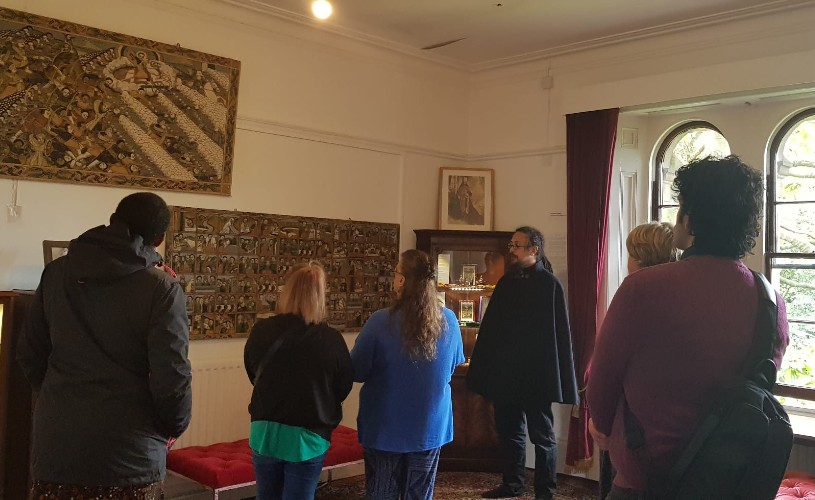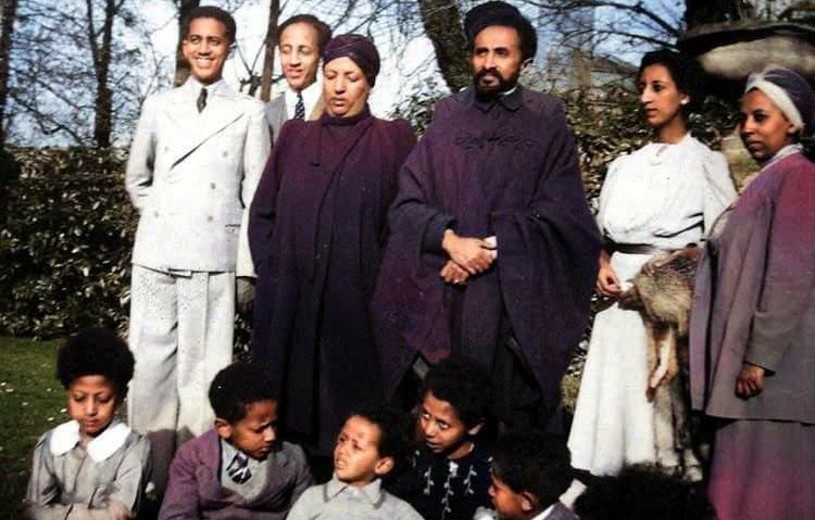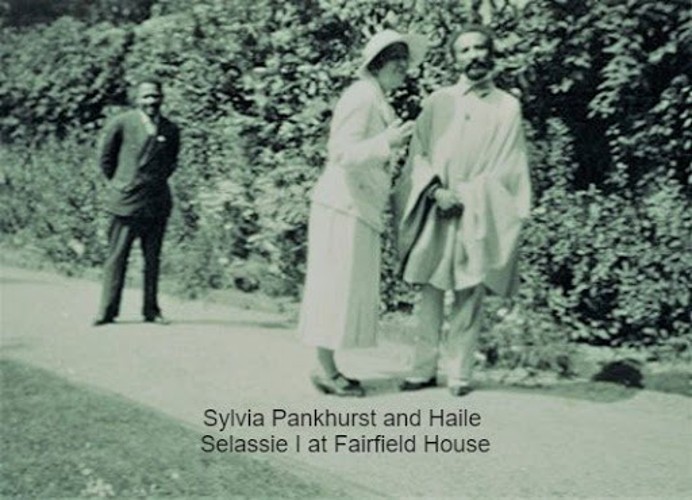Behind the pretty Italianate façade of Fairfield House lies a story of international cultural importance. This Grade II-listed building in Newbridge was the refuge of His Imperial Majesty Emperor Haile Selassie I, Ethiopia’s last emperor who spent five years in exile here from 1936 until 1941.
We spoke to director Ras Benji about the remarkable past of Fairfield House and what you can find there today.
.jpg)
Image - Fairfield House
Firstly, can you tell us about your role with Fairfield House?
I first visited Fairfield House 11 years ago, intrigued to see where the famous “Lion of Judah” lived in the UK. The sense of community here and the importance of the Emperor’s life work made a great impression on me and I have volunteered at Fairfield House since, helping in any way I can. Even before first visiting Fairfield, I loved researching the rich ancient history of Ethiopia and the Emperor's time in Britain and often on a Sunday I will give the historical guided tour of Fairfield House for visitors.

Image - Ras Benji leading a tour at Fairfield House
For people who are unfamiliar with the history, could you explain who Emperor Haile Selassie was and how he came to live in Bath?
His Imperial Majesty Emperor Haile Selassie I, King of Kings and Conquering Lion of the Tribe of Judah was the last Emperor of Ethiopia up to 1975 when the Ethiopian Monarchy was overthrown in a communist revolution. He became the King of Kings of Ethiopia in 1930 and made great progress modernising his country up to 1935 when fascist Italy invaded and attempted to colonise or exterminate the Ethiopian people.
Then in 1936, the Emperor made a famous appeal to the League of Nations where he told of the atrocities committed against the Ethiopian people. Although the Emperor had become the worldwide symbol of anti-fascism, he received an unsympathetic response from the League, so chose to settle in Britain for his exile. His Imperial Majesty then visited Bath, took the healing waters, and made it his home for what turned out to be the next five years.
What was life like for the Emperor and his family at Fairfield House?
Life was overall very difficult for the Emperor and his family during this period. They had great financial struggles as they had only brought limited amounts of funds from Ethiopia and the Emperor was supporting many people. This was in addition to the frequent tragic news that would be received from back home.
The local people of Bath were so welcoming to the Ethiopian refugees and did many things to support the household, like donating coal so the house could be kept warm. The Emperor would often be seen on his daily walks to the River Avon and whenever he went into the city there would be traffic jams and large crowds of people gathered to cheer for him.

Image - Emperor Haile Selassie and family
What happened to Fairfield House when Emperor Haile Selassie left the city and in the decades after?
When His Imperial Majesty and his family left Bath, he gave permission for Fairfield House to become a shelter for orphaned children during and after WWII. In 1954, the Emperor returned to Britain as a celebrated state visitor and stayed at Fairfield House once again. Local people gathered at the gates of Fairfield to cheer him as he returned and it was during that visit the Emperor was awarded the Freedom of the City in the Guildhall.
In 1958 His Imperial Majesty lovingly decided to gift Fairfield House to the City of Bath for the good of the aged. It is still used primarily for this purpose today and has been for almost 30 years, with Bath Ethnic Minority Senior Citizens running a day service for local elderly residents.
How do you commemorate the Emperor’s legacy at Fairfield House today and why do you think it’s important to shine a light on this piece of Bath history?
The Emperor's legacy is fostered and celebrated in many ways at Fairfield House. Firstly, with the ongoing care of the elderly as the Emperor intended, but also with many events throughout the year hosted by the Rastafari or Ethiopian communities. A museum and other rooms of historical, spiritual or cultural interest have been developed here and most recently we are opening to the public on a Sunday, so visitors can be immersed in the history of the house and the lives of the Emperor and other Ethiopians who lived here.
There are many layers as to why this history should be celebrated more here in the City of Bath. It was a wonderful thing for the Ethiopian Royal family to make their home at Fairfield House. They were refugees and were treated with great kindness by the local people throughout their stay, and the Emperor was one of the most famous world leaders in the 20th century, whose teaching still has a very potent positive influence today.
 Image - Sylvia Pankhurst and Emperor Haile Selassie at Fairfield House
Image - Sylvia Pankhurst and Emperor Haile Selassie at Fairfield House
What can visitors experience at Fairfield House? Do you have any personal favourite spaces for people to look out for?
Visitors to Fairfield House are able to walk in the footsteps of the Emperor in the place he continued to fight a gargantuan struggle against fascism and colonialism. Both on the tour and in our exhibits you can learn about His Imperial Majesty's great supporters like Sylvia Pankhurst, or those of the Rastafari faith and their assistance for Ethiopia. We also have the original Pianola and music collection that belonged to the Ethiopian Royal family and this is played for visitors on each tour. My personal favourite area of Fairfield House is called the Sacred Garden and this is where the Emperor and Empress' Chapel once stood.
Are there any other locations in Bath with connections to the Emperor or Ethiopia?
Bath Spa University has a photo on display of HIM's 1954 visit to the Newton Park Campus, which you can see in the main house.
The Roman Baths has several of the Emperor's artefacts which it has displayed in exhibitions, and the Little Theatre was visited the Emperor several times when he wanted to watch newsreels on world events.
Read more about Bath’s history:
Related
Comments
Comments are disabled for this post.






